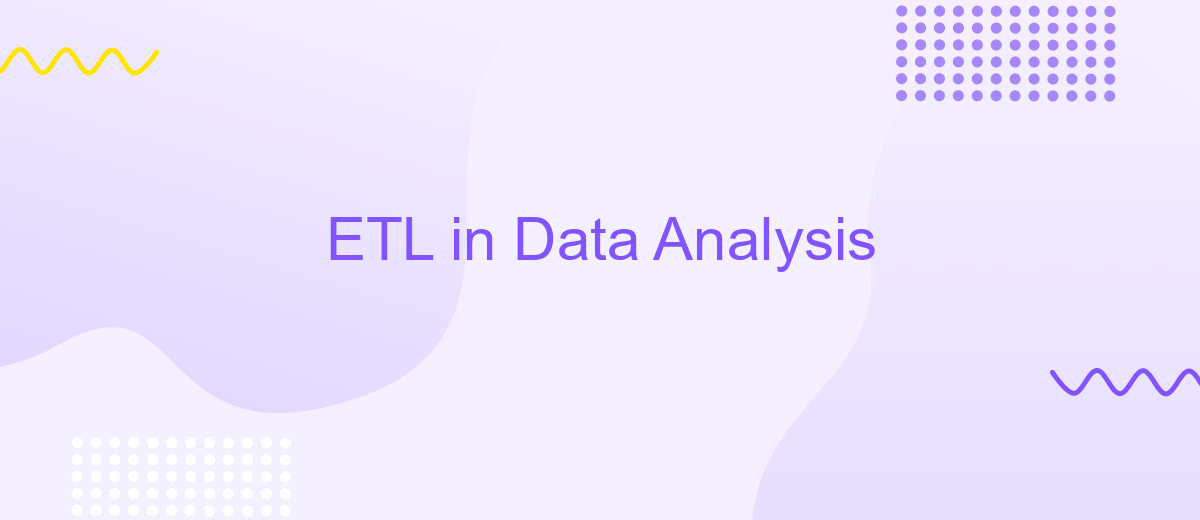ETL in Data Analysis
ETL (Extract, Transform, Load) is a fundamental process in data analysis that involves extracting data from various sources, transforming it into a suitable format, and loading it into a data warehouse or database. This process ensures that data is clean, organized, and ready for analysis, enabling businesses to make informed decisions based on accurate and comprehensive data sets.
Introduction
ETL, which stands for Extract, Transform, Load, is a crucial process in data analysis that involves extracting data from various sources, transforming it into a suitable format, and loading it into a data warehouse or database. This process ensures that data is clean, accurate, and ready for analysis, enabling businesses to make informed decisions based on reliable data.
- Extract: Collecting data from multiple sources such as databases, APIs, and flat files.
- Transform: Cleaning, normalizing, and enriching the data to fit the desired format and quality.
- Load: Importing the transformed data into a target system like a data warehouse or analytical database.
Effective ETL processes are vital for integrating data from disparate sources, and tools like ApiX-Drive can simplify these integrations. ApiX-Drive allows users to automate data workflows between various applications and services, ensuring seamless data transfer and transformation. By leveraging such tools, organizations can streamline their data analysis processes and focus on deriving actionable insights from their data.
Extraction

Extraction is the first phase in the ETL process, where raw data is collected from various sources. These sources can include databases, cloud storage, APIs, and flat files. The goal is to gather data in its most granular form to ensure that no vital information is lost. This phase is critical because the quality of the extracted data directly impacts the subsequent stages of transformation and loading. Effective extraction requires robust tools and strategies to handle data from diverse origins and formats.
One of the popular tools for setting up integrations during the extraction phase is ApiX-Drive. This service allows users to easily connect different applications and automate data transfers between them. By using ApiX-Drive, organizations can streamline the extraction process, ensuring that data is continuously and accurately pulled from various sources. This not only saves time but also reduces the risk of data inconsistencies and errors, thereby laying a strong foundation for the subsequent ETL stages.
Transformation

Transformation is a crucial step in the ETL process, where raw data is converted into a suitable format for analysis. This phase involves various operations to ensure data quality, consistency, and usability. The goal is to make data more meaningful and valuable for business insights.
- Data Cleaning: Removing inaccuracies and inconsistencies from the data.
- Data Integration: Combining data from different sources to create a unified dataset.
- Data Aggregation: Summarizing data to provide a comprehensive view.
- Data Enrichment: Adding additional information to enhance data quality.
- Data Transformation: Converting data into the desired format or structure.
Tools like ApiX-Drive can simplify the transformation process by automating data integration and transformation tasks. With ApiX-Drive, you can set up workflows that connect various data sources and apply transformation rules, ensuring that your data is always ready for analysis. This not only saves time but also reduces the risk of errors, making the ETL process more efficient and reliable.
Loading

The final stage in the ETL process is Loading, where the transformed data is transferred into a target system, such as a data warehouse, database, or data lake. This step ensures that the data is available for analysis, reporting, and decision-making processes. Effective loading strategies are crucial for maintaining data integrity and performance.
There are various methods to load data, depending on the system requirements and the nature of the data. Incremental loading, for instance, involves loading only the new or updated data, which minimizes the load on the system and reduces processing time. Full loading, on the other hand, involves loading all the data, which may be necessary for initial data population or complete system refreshes.
- Incremental Loading: Updates only new or changed data.
- Full Loading: Reloads all data into the target system.
- Batch Loading: Loads data in batches at scheduled intervals.
- Real-time Loading: Continuously loads data as it becomes available.
Tools like ApiX-Drive can simplify the loading process by automating data integration and ensuring seamless data flow between different systems. By using such tools, organizations can streamline their data pipelines, reduce manual intervention, and maintain high data quality and consistency.
- Automate the work of an online store or landing
- Empower through integration
- Don't spend money on programmers and integrators
- Save time by automating routine tasks
Benefits and Applications
ETL (Extract, Transform, Load) processes offer numerous benefits in data analysis, making them indispensable for businesses aiming to leverage data-driven insights. By automating data extraction, transformation, and loading, ETL tools streamline data integration from various sources into a centralized repository. This results in enhanced data accuracy, consistency, and accessibility, enabling analysts to make informed decisions quickly. Moreover, ETL processes help in cleaning and normalizing data, reducing errors and ensuring high data quality, which is crucial for reliable analytics and reporting.
Applications of ETL in data analysis are extensive, spanning across industries such as finance, healthcare, and marketing. For instance, ETL tools can be used to integrate customer data from multiple platforms, providing a unified view that aids in personalized marketing strategies. Services like ApiX-Drive facilitate seamless integration by connecting various applications and automating data workflows, thus saving time and reducing manual errors. By leveraging ETL processes, organizations can optimize their data management strategies, enhance operational efficiency, and gain a competitive edge in the market.
FAQ
What is ETL in data analysis?
Why is ETL important in data analysis?
What are the main challenges of the ETL process?
How can ETL processes be automated?
What are some best practices for ETL in data analysis?
Time is the most valuable resource for business today. Almost half of it is wasted on routine tasks. Your employees are constantly forced to perform monotonous tasks that are difficult to classify as important and specialized. You can leave everything as it is by hiring additional employees, or you can automate most of the business processes using the ApiX-Drive online connector to get rid of unnecessary time and money expenses once and for all. The choice is yours!


